i.7. (New) Mechanick Exercises
Video, Print Design, Performance, Installation
(New) Mechanick Exercises
(New) Mechanick Exercises emerged from a fascination with Joseph Moxon’s Mechanick Exercises or The Doctrine of Handy-Works (1677), a technical manual and builder’s guide that offers detailed instructions on the construction and operation of a printing press. The first English-language book ever published on typesetting, the original Mechanick Exercises instructs the reader not just on mechanical techniques of printing, but also on the ideal physical postures and movements required to operate a press.
This collection of works—research plates, a video, a print publication, and a live participatory performance—explores the tools and technologies of design and how they connect to conditions of labor and the disciplining of the body.


The fist piece in this body of work is a series of printed plates that combine excerpts from (as well as notes on) Moxon’s text alongside visual research on architecture and design’s historical and ongoing attempt to analyze, standardize, control, and design for (and with) the human body.
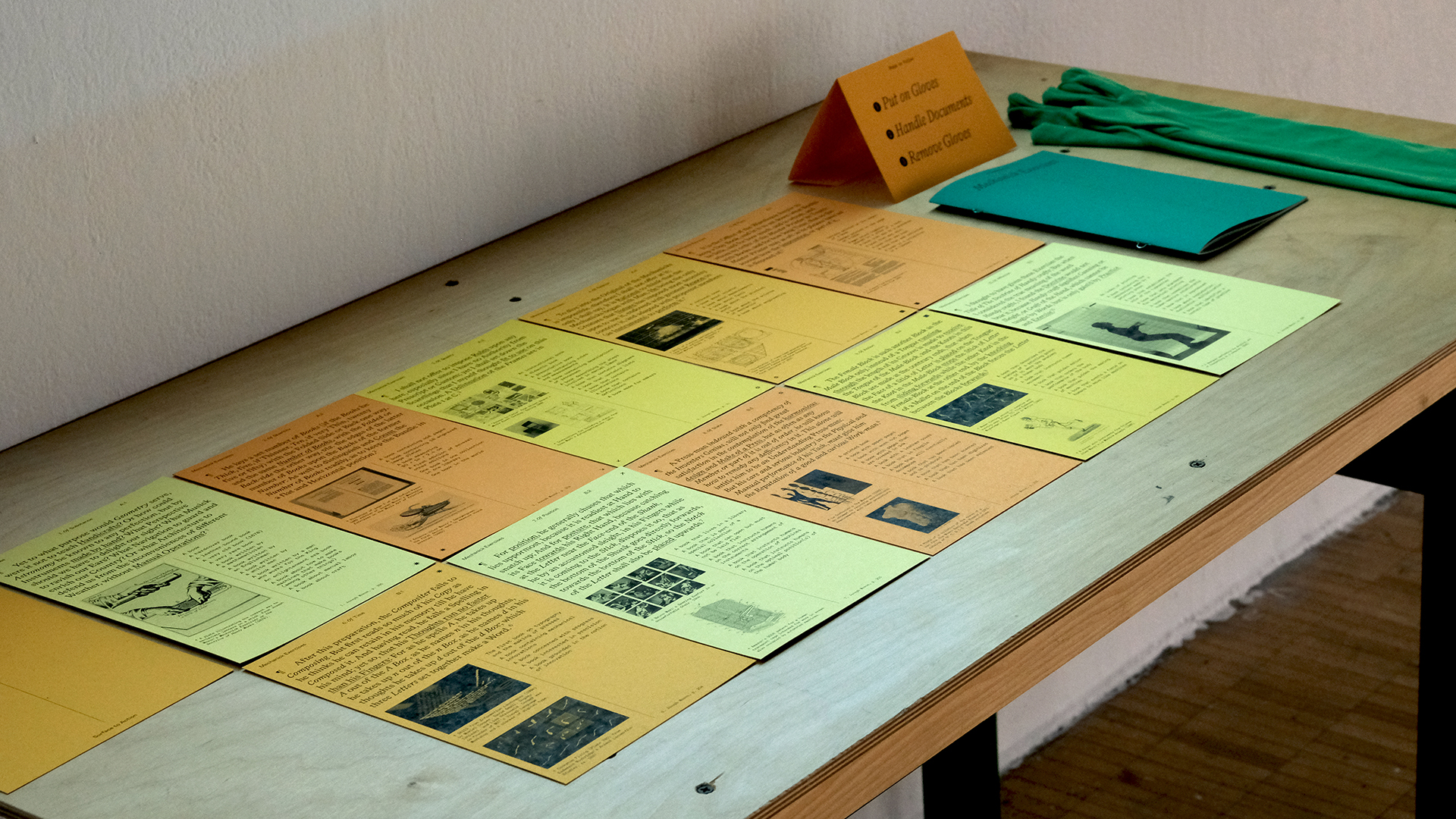
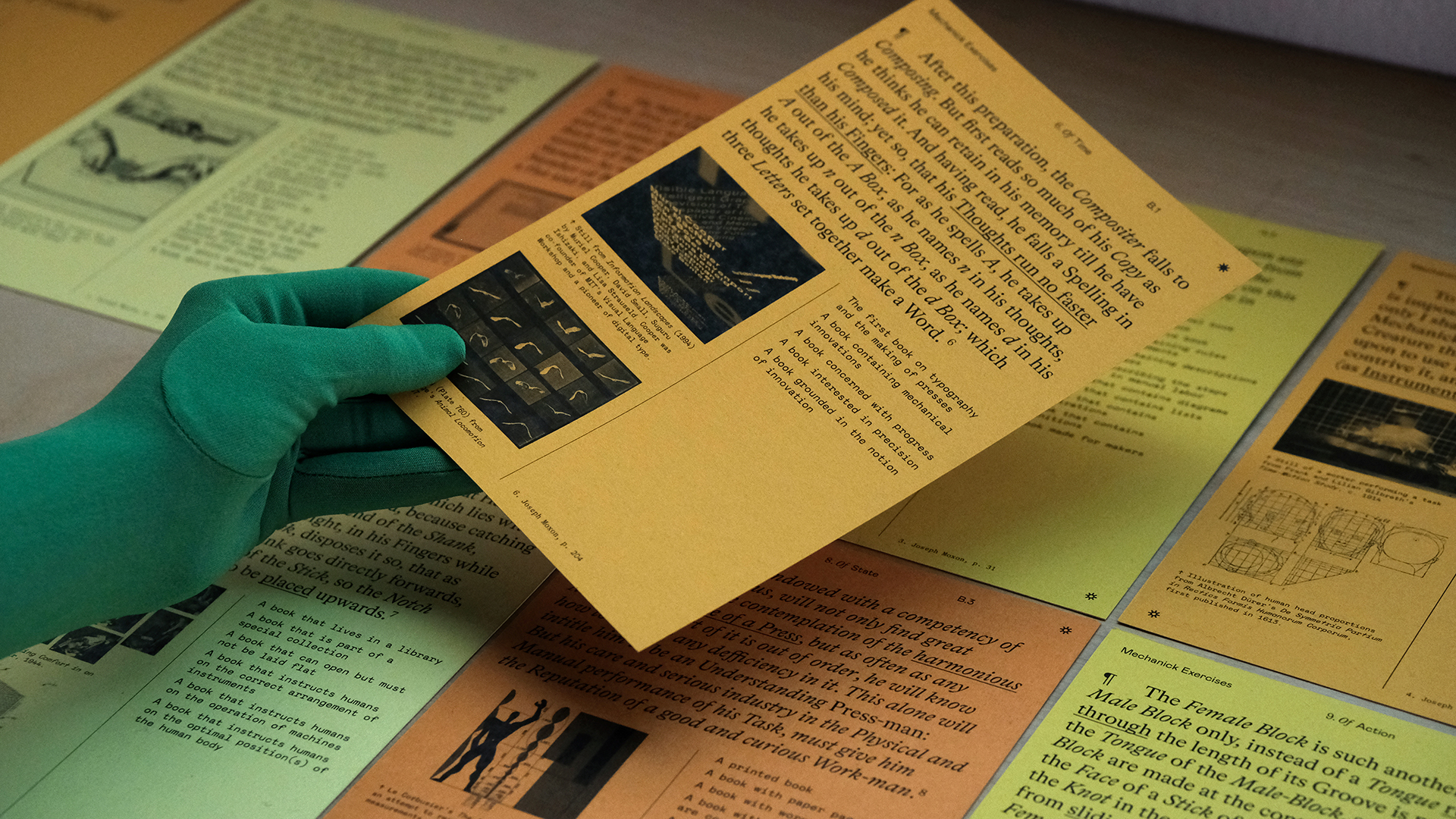
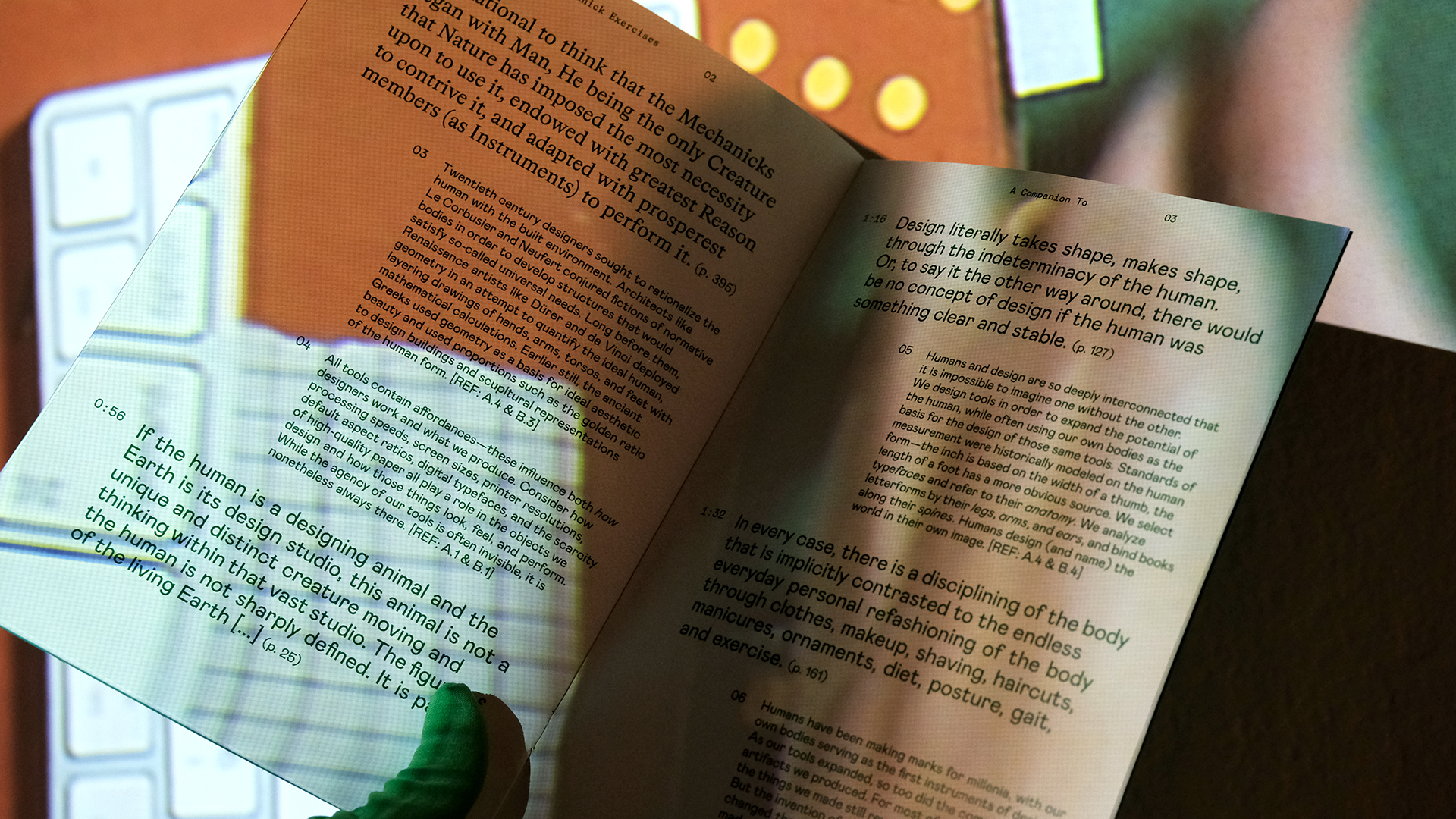
A booklet was created as a supplement to the video piece shown above. It includes all of the voice-over text from the video as well as supplementary footnotes that expand on the ideas presented in the video.
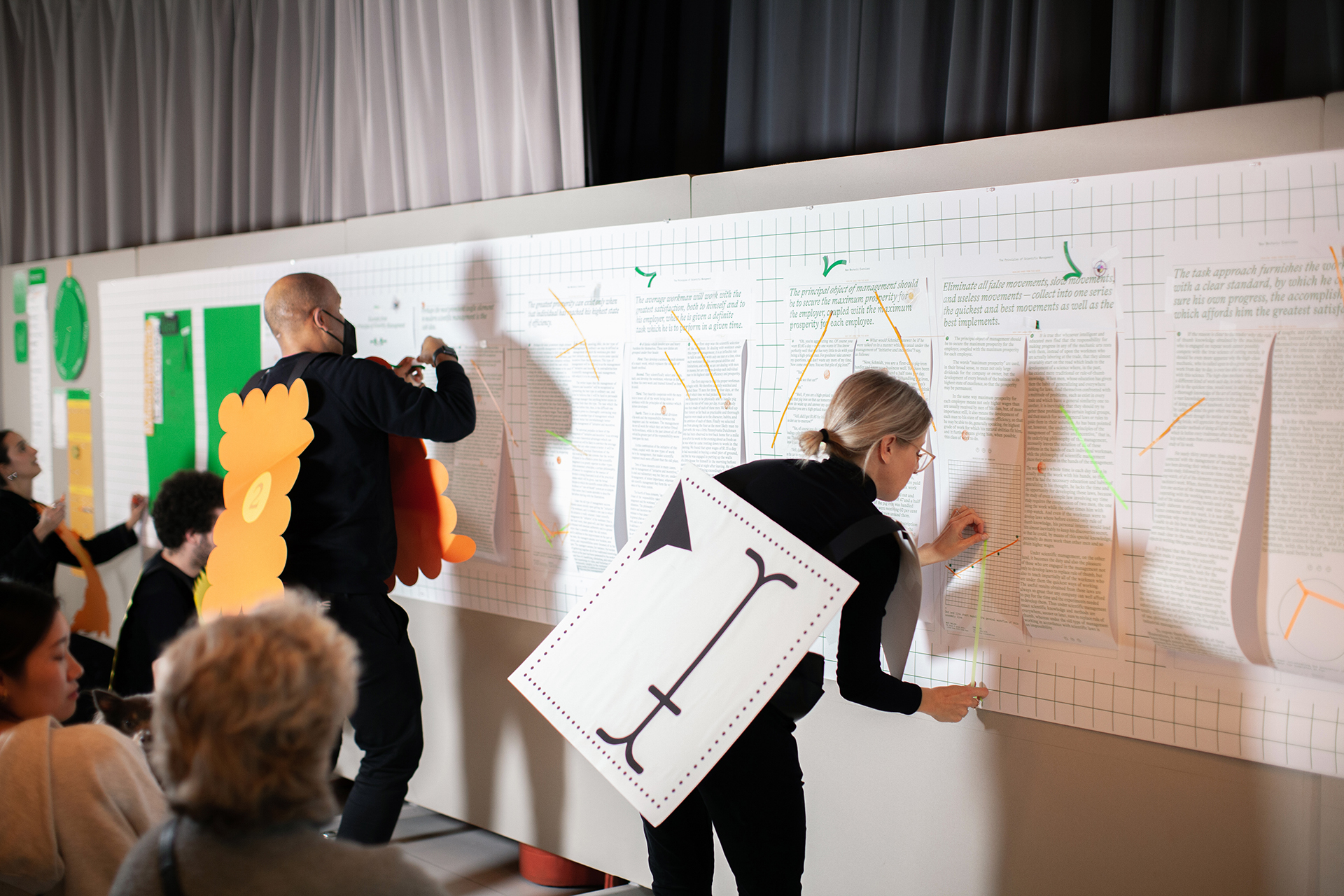
(New) Mechanick Exercises climaxed in a live participatory performance that deployed slapstick humor and exaggeration of sound and scale to magnify the effects of design tools and technologies not just on worker productivity but also on the movements and conditions of the body.

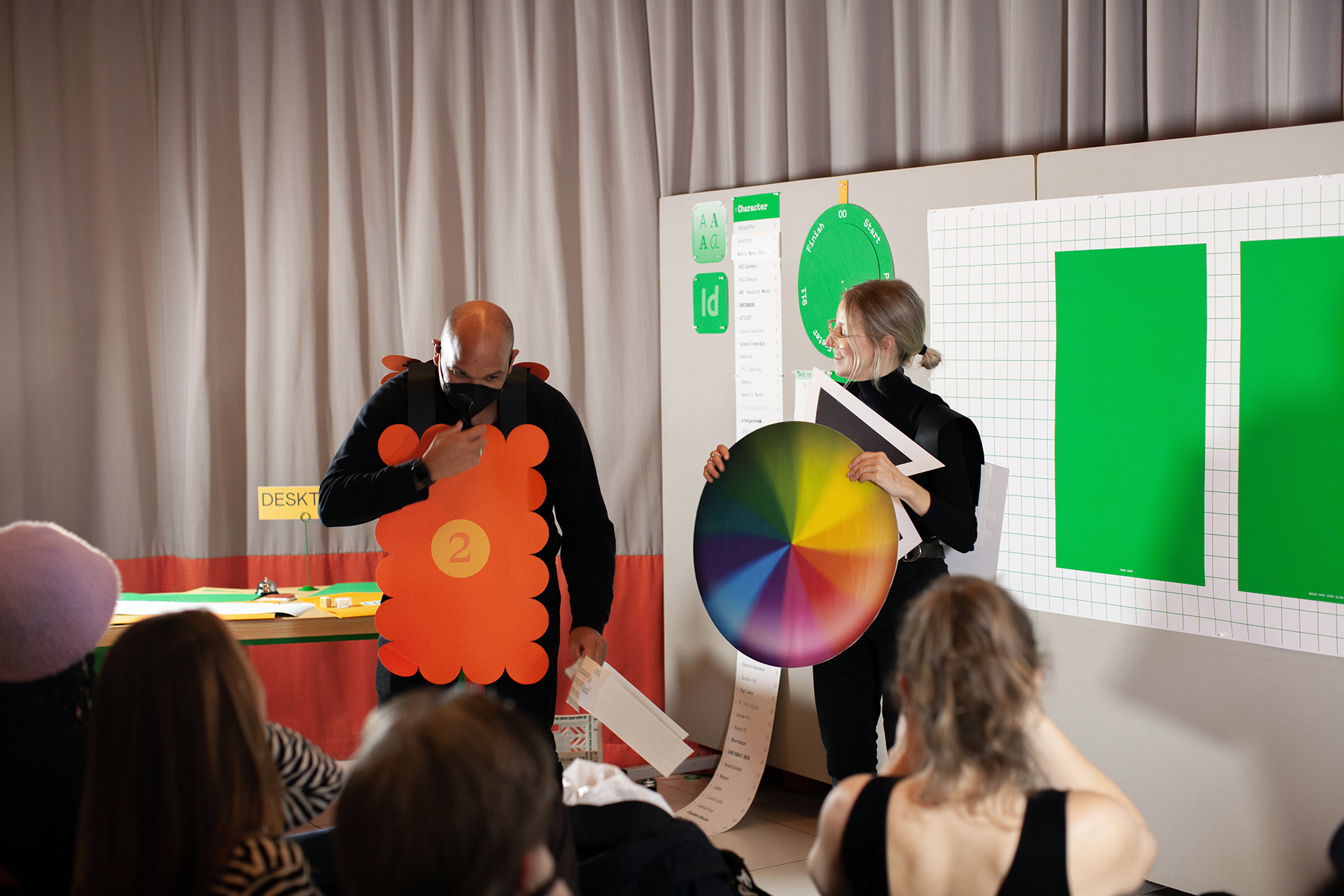
During this 20-minute performance, participants were tasked with typesetting Frederick Taylor’s 1911, The Principles of Scientific Management. Participants were given instructions read out to them by an AI voice-over. Each was assigned a specific role and given precise instructions on when and how to perform each tasks from font installation to file setup and layout. Staged as an XL analog translation of the experience of working under impossible deadlines with glitchy design software, this work took inspiration from Fluxus performance scores and was designed to exaggerate the participants’ movements one stage.

The themes of time, productivity, and worker efficiency were emphasized by sounds of a ticking clock, constant buzzers, and high-pitched warnings about the time left to complete the project. Numerous errors and “glitches” slowed down “productivity”, further emphasizing both the impossibility and absurdity of the task assigned.